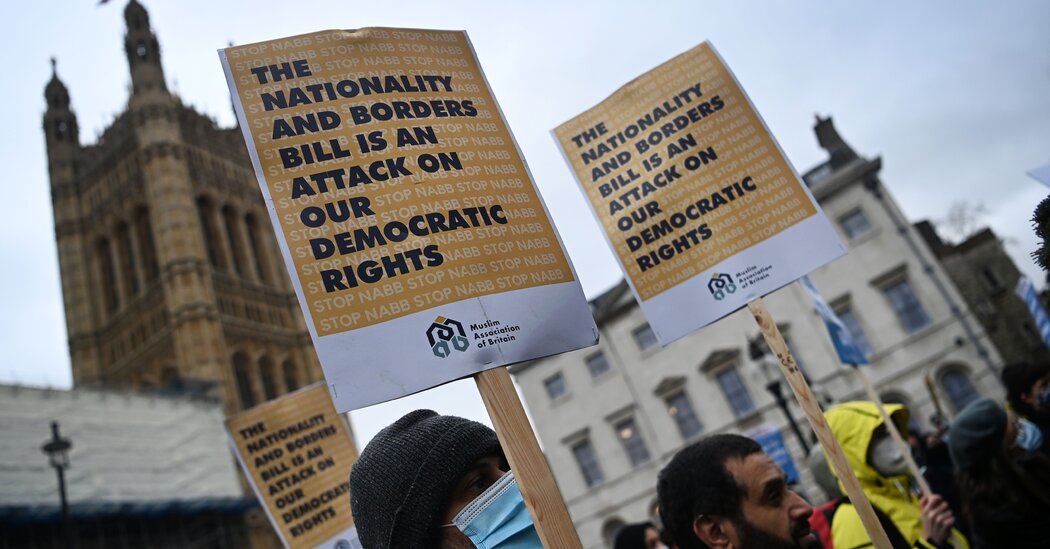LONDON — Prime Minister Boris Johnson’s office said he would announce a migration partnership with Rwanda on Thursday, prompting speculation that the deal will include sending migrants arriving in Britain to the African country for processing.
Details of the new pact, and who it might impact, were not clear Wednesday night, though British media reports have suggested that the government was exploring proposals to fly asylum seekers arriving in Britain to Rwanda, for their claims to be dealt with there.
Downing Street said the move Mr. Johnson was set to announce would be as an effort to tackle illegal immigration at a time when thousands of people have crossed the English Channel in small boats.
Any proposal to “offshore” the processing of asylum application would be likely to provoke opposition and outrage on civil liberties grounds. Previous efforts to discuss the processing of migration cases in Albania and Ghana came to nothing.
The British government has proposed a legal framework that would make it possible to transfer asylum seekers out of the country while their applications are processed and to arrest those who arrive by boat across the English Channel. The proposal is still working its way through Parliament.
Mr. Johnson is scheduled to speak on Thursday morning in Kent, a coastal region, where thousands of asylum seekers have arrived after making dangerous crossings of the English Channel, often in unseaworthy boats from France.
In a statement issued Wednesday, Downing Street said that, after his speech, the prime minister would detail the plan, which was “signed by the home secretary, Priti Patel.” The statement also called Rwanda “one of the fastest-growing economies in Africa which is recognized globally for its record on welcoming and integrating migrants.”
According to the BBC, at least 2,354 people arrived in Britain on small boats last month, almost three times as many as in the same month last year, and Sky News reported that British border agents were expecting a total of around 60,000 arrivals this year.
While the number of asylum seekers arriving by boat was significantly higher in 2021 than the previous year — and appears to be rising again in 2022 — experts have said it signals a change in route: Those hoping to enter Britain to claim asylum have shifted from other means of entry such as smuggling by truck and arriving by plane, as some means of international travel were halted by the pandemic.
The number of overall asylum applications is still significantly lower than its peak two decades ago, with the total in 2021 just over half of what it was in 2002.
Asylum seekers often come to Britain from war-torn countries, like Syria and Iraq, or looking for financial opportunity, even though crossing can be deadly. In one episode last year, at least 27 men, women and children died trying to cross.
Mr. Johnson, who is under political pressure at home after being fined on Tuesday over breaches of lockdown rules, would be likely to welcome debate on another issue.
Other countries have tried such hard-line tactics to try to deter migrants, including Australia, which has used asylum processing centers on Pacific islands such as Nauru. In September, Denmark’s Parliament passed a law that allows the nation to relocate asylum seekers outside of Europe to have their refugee claims assessed, despite criticism from rights groups and the United Nations.
Britain’s failure to stop the boat crossings has been a persistent embarrassment for a government led by Mr. Johnson, who campaigned for Brexit in a 2016 referendum, claiming that it would allow the country to “take back control” of its borders.
According to excerpts from his speech, released in advance by Downing Street, Mr. Johnson is expected to say that Britain “cannot sustain a parallel illegal system. Our compassion may be infinite, but our capacity to help people is not.”
Megan Specia contributed reporting.
Check out our Latest News and Follow us at Facebook
Original Source
